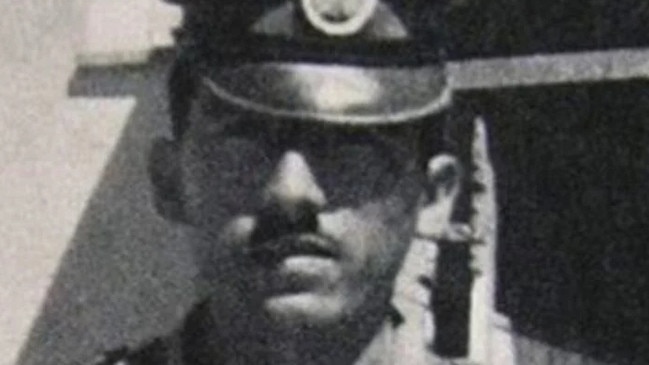The worst moment of my life: soldier who shot Che Guevara told of his fear
When Bolivian soldier Mario Teran was given the job of executing the communist rebel, his gaze made the sergeant ‘dizzy’.

Mario Teran Salazar. Soldier.
Born Cochabamba, Bolivia, April 9, 1942; died La Paz, March 10, aged 79.
-
“Che Guevara in his Motorcycle Diaries says to be a revolutionist you firstly need a revolution,” AFL coach Luke Beveridge told his young Bulldogs charges last week, adding: “He’s right, of course.”
Of course? The poisonous Ernesto Guevara was an arrogant, self-obsessed Marxist killer who conducted summary “trials” of the uneducated villagers who opposed the Argentinian as he violently undermined their countries. Beveridge’s motorcycle hero detailed how he murdered them: “I carried out a very summary inquiry and then the peasant Aristidio was executed.”
Put that in your diary. The cultish fiction that has grown around this thug sits somewhere between blasphemous and boring, but it endures. Guevara’s plan, after having meddled in Cuba’s revolution, was to export communism around Africa and South America. He did this by becoming a cold killer.
In The Motorcycle Diaries, and this may be Beveridge’s favourite bit, he states: “I feel my nostrils dilate savouring the acrid smell of gunpowder and blood, of the enemy’s death.”
But these days his memory – on badges, berets, mugs and Madonna – retains the political potence of a fifth Beatle.
The end for Guevara – who seldom spent a dollar that wasn’t earned by someone else – was grubby and nasty, like the life he led after abandoning the benevolent altruism of his youth. He had been captured the day before and, on October 9, 1967, was shot dead by Mario Teran, a Bolivian Army sergeant. Teran and his team had been trained by CIA special activities division operative Felix Rodriguez who, a few years before, had been part of the misguided CIA-backed Bay of Pigs invasion that tried to overthrow Fidel Castro’s revolutionary government in Cuba. Rodriguez, who two decades on would be caught up in the Iran-Contra scandal that involved arms sales to Iran, had been asked to keep Guevara alive, but this was overruled by Bolivian President Rene Barrientos. Guevara and a comrade, Willy Sarabia, had been injured in the firefight that trapped them and were kept bound overnight in a mud brick school of just two rooms, each about 2m by 3m.
A soldier executed Sarabia with a short burst of machine gunfire the next morning. The stocky Teran had lost three colleagues to the Guevara-led guerillas in recent days, all also named Mario, and so was chosen to kill Guevara.
He never boasted about his role but once described its grim details. He had been drinking beer – the soldiers had been celebrating overnight – and was probably tipsy. Teran was ordered not to fire into the prisoner’s head but to aim at his chest, in keeping with the official account that Guevara had been killed in combat, news of which was already broadcast.
Teran later described it as the “worst moment of my life”. He added: “I saw Che large, very large. His eyes shone intensely. I felt him coming over me and when he fixed his gaze on me, it made me dizzy.” Guevara told Teran to remain calm and aim well. “You are only going to kill a man.”
It is disputed how many times Teran shot the prisoner, but he thought about nine times, missing at first. “I took a step back toward the door, close my eyes and fired.”
Guevara’s body with greasy, matted hair, torn clothes and crude, homemade sandals was strapped to the right skid of a helicopter and flown 50km to the town of Vallegrande, where it went on display.
In his final minutes, Rodriguez asked Guevara why he had chosen Bolivia to try to foment revolution. “We were looking for a poor country, and Bolivia is poor, and … shares boundaries with five countries,” Guevara said. “If we are successful in Bolivia, then we can move into other places – Argentina, Chile, Brazil, Peru, Paraguay.”
They spoke of Cuba, the rebel lukewarm about his old friend Castro, describing the Cuban economy as a mess. Guevara had been president of the Cuban National Bank. Apparently Castro had announced he needed a “dedicated economista” and Guevara put up his hand for the role believing he had said “communista”.
Rodriguez still has the dead man’s “steel Rolex GMT Master with its red-and-blue bezel” and the unburnt tobacco from Guevara’s last pipe.
Teran stayed in the army another 30 years, married and had six children, living for decades in the Bolivian capital, Santa Cruz de la Sierra, under the name Pedro Salazar in case he was targeted by Cuban assassins. Under that name, a few years back, Cuban doctors on a goodwill mission to Bolivia removed cataracts from Teran’s eyes.




To join the conversation, please log in. Don't have an account? Register
Join the conversation, you are commenting as Logout